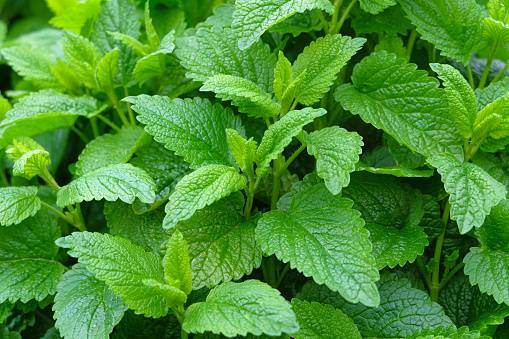
Lemon balm (Melissa officinalis), often known as the "elixir of life," is an ancient herb from the mint family that has been used as a medicinal and flavoring for food and drinks for over 2,000 years. It is native to southern Europe, but is now naturalized in the Americas and beyond. It's a fantastic plant to cultivate in the garden because of the lemony aroma it emits from its foliage.
About Lemon Balm Plant:
Lemon balm is a bushy perennial herb that grows to a height of two feet. It is a resilient and fuss-free plant. Along squarish stems, it produces pairs of wrinkled, serrate, 3-inch long oval leaves in medium green.
Complete Guide to Grow Lemon Balm
1. From Seed:
-
Sow directly in the soil from late March to mid-April or start seeds inside 6 to 8 weeks before the last frost.
-
Plant seeds with just enough dirt to cover them. Dust the surface lightly with a spoon.
-
Allow just enough water in the growing medium to prevent seeds from drying out or washing away. To avoid disturbing the plants, mix the soil with a bottle of water. If growing in starter pots, water from the bottom.
-
In 2 to 3 weeks, the seeds will germinate.
-
Once the seedlings have emerged, keep the soil moist at all times.
-
Allow plants to grow a few inches if seeds were started inside. When they're big enough to handle, transplant them into the garden.
-
Space transplants 18 to 24 inches apart.
-
If sown directly in the garden, thin seedlings initially to 8 inches apart. After a few weeks, do a second thinning to a minimum of 18 inches apart.
2. From Cuttings:
-
Snip a 2 to 3-inch cutting with healthy leaves and new growth at the tip.
-
Put the cuttings in a cup of water and place it somewhere that gets indirect sunshine.
-
As needed, replenish the water supply. The roots can take up to 6 weeks to sprout from the stem's base.
-
Plant the lemon balm cutting in nutrient-rich soil and water it well once it has developed a good set of roots.
-
Continue to grow the plant indoors for a few more weeks before hardening it off and transferring it outside.
3. From Starter Plant:
-
When the weather is warm enough to transplant outside, loosen the soil at your chosen location with a shovel to a depth of about 10 inches.
-
Work some compost into the soil.
-
Dig a hole that is slightly larger than the plant's pot.
-
Remove the lemon balm from the pot and plant it at the same depth as before.
-
Replace the soil around the roots with your hands and gently push it down.
-
During the first week or two, water deeply and frequently to let the roots establish themselves in their new habitat.
How to Harvest Lemon Balm:
-
You can harvest the leaves of your lemon balm plants for the rest of the season after they are established and producing new growth.
-
Remove the leaves and clip off a length of stem to harvest. Plants will re-grow from the point where you cut them. To maintain lemon balm healthy and fruitful, never harvest more than 25% of the plant's foliage at a time.
-
Older leaves are usually more soft, aromatic, and delicious than newer ones. Fresh leaves are best employed in culinary preparations because dried leaves lose a lot of their aroma.
-
Hang lemon balm bunches in a warm, dark, and well-ventilated area to store for later use. Once completely dried, remove leaves and store in a tightly sealed container. Fresh leaves can also be placed in the freezer.
If you follow this guide, you’ll have an abundance of lemon balm in no time! Be sure to check out our next article on 7 wonderful Uses of Lemon Balm.











